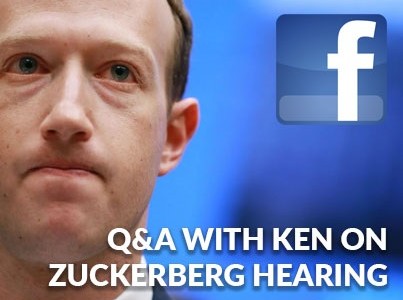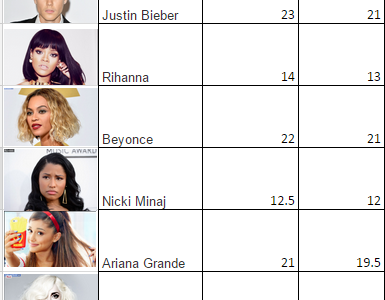We at WebiMax are proudly celebrating our 10th anniversary in 2018. Over the last decade, WebiMax has grown to become one of the top online marketing companies in the United States. I sat down with WebiMax Writer & Reporter Pat Donohue and discussed WebiMax’s growth and success since its inception in 2008, as well as […]
Tag Archives: article
“Show Me The Proof That Facebook Is To Blame In Cambridge Hack”
Facebook is a merely a “conduit” and it’s “hard to say” that the social media platform is solely to blame for the data breach that saw 87 million accounts exposed to Cambridge Analytica. That’s the stance of Ken Wisnefski, founder, and CEO of digital marketing agency WebiMax, and he’s withholding judgment until someone can show […]
Has the NFL Jumped the Shark?
There is always that defining moment in a TV series when fans watch an episode and have to say, “Wow…what the heck is happening here?” Like when Pam and Jim finally got married on The Office or that episode of Happy Days when Fonzie literally jumped over a shark on a jet ski, hence starting […]
Move Over Emoji, Here Comes Giphy – from Mobile Marketing Watch
WebiMax CEO Ken Wisnefski penned this blog on the new Giphy Keys for Mobile Marketing Watch I know new smartphone users in their 70s who not only use emojis, but talk about the meanings and nuances behind them. In 2015 Oxford Dictionary named (smiley face with tears of joy) its word of the year. I […]
Ken’s Article in Financial News Site The Street: The Future of Elections: Presidents Will Be Chosen Online, and Ad Budgets Will Follow
Political ad budgets on broadcast television are on track to be six times as much as they are online this year. Yet, the interference that the Internet has introduced into this election has been palpable. Our elections are going to be decided online either in this cycle or the next — not via online ballot box, […]
How 10,000 Characters Makes Twitter Relevant Again for Marketers – By Ken Wisnefski
Wall Street has long been skeptical of Twitter (TWTR – Get Report) due to its inability to drive revenue through ads the way some other platforms have (see: Facebook). But, there’s hope. With the return of CEO Jack Dorsey, Twitter is nowreportedly contemplating removing the 140 character limit on tweets and replacing it with a 10,000 character limit. With […]
Ken Wisnefski Calls HubSpot’s Free CRM a Game Changer in Financial News Site The Street
My firm, Internet marketing company Webimax, has helped clients use HubSpot for years. Recently, we have noticed many of our clients move to HubSpot from competitors, like Marketo, another marketing automation tool. But many customers are still not realizing HubSpot’s full potential. The CRM add-on could change that. For one thing, the add-on is free. […]
Ken Wisnefski Penned An Article for Financial News Site The Street on Google’s Rebranding to Alphabet
NEW YORK (TheStreet) — When your company has the kind of brand recognition that very few companies can even dream of, is changing the name a good idea? Well, if your goals have expanded beyond just search-engine algorithms and into taking over the entire universe and your name is Google (GOOGL – Get Report), then […]
Ken Wisnefski wrote an article in TheStreet.com on how Google’s Buy Button is no threat to Amazon
Here’s an excerpt from Ken’s article in TheStreet.com: What Google is doing here is nothing new for digital businesses. We’ve seen it time and again: Once an internet platform has enough users, it attempts to aggregate different functionalities and content to keep those users from spending time on other platforms for other purposes. Most recently, […]
Is Facebook a Helping Hand for News Media or has it become a Crutch? from TheStreet.com
Ken Wisnefski penned an article in Jim Cramer’s TheStreet.com on Facebook’s new Instant Articles. Below is an excerpt: …Social media sites are also vying to keep eyeballs on their own sites so they can serve up ads. As such, they really have no incentive to send people away to other sites like the New York […]
Google’s Mobile Push: April 21st is coming, is your business ready?
At the end of February, Google announced that beginning April 21st, websites that were not ‘Mobile-Friendly’ would go down in Google’s page ranking system for mobile search and subsequently lose significant web traffic. For business execs that count on their website to drive sales, this can have a very real effect on the bottom line. […]
Wal-Mart’s Loss is Other Retailers Gain in Google’s Local Inventory Ads
Mobile tech is here to stay – streamlining once mundane tasks with ease. Nowhere is this movement more evident than in marketing. Today the trend seems to be hyper-local advertising, and brick and mortar retailers seem to be the big winners here. Where it used to be common to hear predictions of the end to […]
Yahoo Eyes Up Cable Networks with Alibaba Cash
Yahoo owned a large stake in Alibaba, and when Alibaba had its record breaking IPO last fall, Yahoo made a lot of money. They cashed out $9 billion worth of shares, and their remaining 401 million shares of stock climbed to a value of about $40.5 billion. Investors have been eagerly speculating on what Yahoo […]
Ebay, Mozilla, Yahoo and Bing vs. Google – The SEO Wars
I used to get frustrated when people asked, “does SEO still matter?” because while it was obvious to me that it mattered, there are definitely a lot of ways to answer the question, a lot of them long and technical. But now I just say – ask Ebay if SEO still matters. You see, […]
The value of fake friends…
Celebrities with a large number of Instagram followers have taken a substantial hit this week devaluing their accounts as Instagram announced that they have “completed a fix to remove spammy accounts.” Stars like Kim Kardashian and Katy Perry both saw their followers fall by over a million each. There’s a huge advertising opportunity […]
Brick and Mortar is Pushing Back against E-tailers… and intelligently using technology to do it
Brick and Mortar establishments, small ones included, are getting wise to the mobile revolution. Folks used to talk about ecommerce winning the war over brick and mortar due to its convenience, but companies are beginning to understand the dynamics between that ultra-convenience of mobile ecommerce, and the human need to get out of the house […]
TV’s future looks bleak as content moves online
To say that the way people consume media, or content is changing would have to be the understatement of the decade. While bandwidth and computing speed has continually increased since the 90’s, people have been discovering new digital avenues to interact with news, entertainment, games and even each other. […]
Snapchat takes no responsibility for the Snappening or you thinking your “Snaps” would actually disappear.
So “the Snappening” happened last month, and 90,000 private photos taken by Snapchat users (mostly of an explicit nature) were leaked over the internet. But according to a new study by Sumpto, the majority of college students still trust Snapchat and will continue to use it. My thoughts are that Snapchat isn’t blameless, and people […]
In the publicly-held tech arena, will HubSpot be a winner or a loser?
HubSpot recently had a very successful IPO, but does it have what it takes to be successful long-term? Recently it seems we are living in an era where some big tech company seems to launch, get bought, or has an IPO every other week. The business models for some of them are something altogether untested […]
Let Apple’s U2 stunt be a lesson to those that want to give away free music.
As part of the promotion for the latest iteration of the Iphone, Apple inadvertently ticked off a lot of customers -presuming that they’d like a copy of the new U2 album and thereby uploading it onto their devices. In doing so, Apple basically said, “whether you like U2 or not, you like U2.” This deal […]














